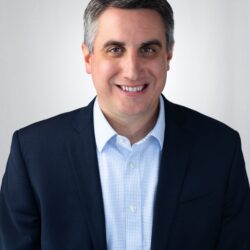Overcoming common misconceptions about group DI

By Evan Scarponi and Meghan Pistritto
Employees generally expect their employers to provide workplace benefits that contribute to their overall well-being. This has sparked a workplace benefits market shift in the emergence of holistic wellness. Disability insurance, a form of income protection, is important to any physical, mental and financial wellness strategy.

Although disability insurance is critical, it remains a misunderstood and underused product. Workers who become disabled and unable to work leave themselves and their loved ones susceptible to financial hardship without proper income protection. The reasons people forego disability insurance vary, but there is often a belief that they will never experience a disability, or that workers’ compensation or Social Security Disability Insurance will cover them if they do.
The Social Security Administration estimates that 1 in 4 of today’s 20-year-olds will experience a disability before the age of 67, and about 70% of adults over the age of 65 will need long-term care at some point, but everyone can safeguard their financial futures by preparing for life’s unexpected curveballs. This Disability Insurance Awareness Month, find out why this form of income protection matters in financial and holistic plans.
The current disability landscape

Insurance policies can define disability in different ways, but many companies require that there is a demonstrated inability to perform one’s job, coupled with a loss of income of at least 20% of pre-disability earnings.
There is a misconception that disability insurance only applies to physical or accident-related injuries, but coverage is much broader than that. Pregnancy, orthopedic conditions and cancer diagnoses are just a few examples of what could be covered.
Prior to the pandemic, it was well known that behavioral health conditions could be a leading cause of disability by 2030. Since the pandemic, this trend has only accelerated. Prudential’s Neuro Flow case study estimates that nearly 1 in 5 people with chronic physical conditions report developing stress, anxiety or depression. Filing a disability claim can be emotional, on top of the behavioral health struggles many individuals experience.
The income protection gap
According to Prudential’s financial wellness case study, 60% of American households have experienced a “financial shock” in the past year. Although everyone lands on the “financial security” spectrum differently, anyone could be vulnerable to unexpected circumstances.
Only 40% of U.S. households report having enough liquid savings to cover at least three months of recurring expenses. Even less, 28%, could cover six months of expenses. On top of this, 1 in 4 of today’s 20-year-olds can expect to be out of work for at least a year because of a disabling condition before they reach retirement age.
What about Social Security Disability Insurance? It can take 3-5 months to receive an application decision from Social Security Disability Insurance at the initial level, and only 21% of initial applications are approved. That increases to 32% after appeals, which can take several months for a final decision.
Short-term versus long-term disability insurance
When an injury or illness impacts someone’s ability to work, their earnings could be the first loss. Most short-term disability insurance policies will provide income protection for up to 40%-70% of pre-disability income, for 13-26 weeks. The most common short-term disability claims include pregnancy; musculoskeletal disorders affecting the back, knees, hip and shoulders; hernias and gastritis, and mental health issues such as depression or anxiety.
Long-term disability insurance will provide benefits once the short-term disability insurance ceases, and usually covers about 60% of earnings until Social Security benefits begin. Cancer, fractures and sprains, mental health issues, and heart attacks or stroke account for the most common long-term disability claims.
State-mandated insurance and paid family and medical leave
For decades, some states have required employers to provide some form of disability insurance, including New York, New Jersey, Rhode Island, California, and Hawaii.
With time, the market has introduced Paid Family and Medical Leave. Some states are now requiring Paid Family and Medical Leave benefits that are not tied to earnings loss and are allowed to be taken intermittently.
These benefits go beyond individual disability, and can include family care, child bonding and military events. Although these state mandated coverages are great for providing some form of income protection, it is often not enough, and coverage widely varies. For example, the state of New York covers 50% of wages up to $170 per week, while the state of Colorado can cover up to 90% of wages, capped at $1,100 per week.
For many Americans, these benefits may not cover cost of living expenses. It’s important to take state required benefits into account and recognize where disability insurance can help bridge the gap between limitations.
Intersecting claims
Injury and illness can cause intersecting claims. For example, being out of work and loss of earnings can cause or exacerbate mental health disruptions such as stress and anxiety. This conversely can delay one’s ability to return to work and get themselves back on the right track financially, creating a cycle that is hard to break.
By having disability insurance in place, people are more protected and have a better chance of returning to work sooner, minimizing the havoc an injury or illness could wreak on physical, mental and financial wellness.
Other holistic workplace benefits
Look for opportunity where disability insurance can provide protection, and consider other the other potential workplace benefits:
- Consider whether expanding benefits goes beyond one injury or illness to cover paid benefits for caregiving, bonding, or military events.
- Is there caregiving support? Disability insurance can provide support beyond an individual’s injury or illness. Look into care plan access, facility guidance, and benefit eligibility.
- Financial wellness matters, too. Check for programs that include accessible financial resources.
- Mental health resources are crucial. Benefits should be easy to find, and proactively support those at risk or in crisis.
Now what?
Helping American workers build a strong foundation can have positive impacts on their financial security, and their overall well-being. The workplace benefits landscape has become increasingly holistic and inclusive, presenting a very real opportunity to make a difference for the 62% of employees concerned about their health and 80% that say financial challenges have a negative impact on their well-being.
Evan Scarponi is chief claims officer for Prudential’s group insurance business. He may be contacted at [email protected].
Megan Pistritto is Prudential's vice president of disability and paid leave, product lead. She may be contacted at [email protected].
© Entire contents copyright 2023 by InsuranceNewsNet.com Inc. All rights reserved. No part of this article may be reprinted without the expressed written consent from InsuranceNewsNet.com.




Distracted driving continues to spiral, with estimated costs in billions
Preventive care coverage still in question as appeals court pauses decision
Advisor News
- Does your investor client know how much they pay in fees?
- Get friends to do business: 2 distinct approaches
- Unlocking hidden AUM: Prospecting from within your client base
- Protests in D.C. Take Aim at Health Insurance, Financial Institutions, Oil & Gas Interests
- Charitable giving tools available for taxpayers; due to expire
More Advisor NewsAnnuity News
Life Insurance News
Property and Casualty News
- 2024 Annual Report 2024 Summary Report
- Surety Industry Unites on Capitol Hill to Advocate for Key Legislative Priorities
- ICE Mortgage Monitor: Property Insurance Costs Rose at a Record Rate in 2024 Prompting Homeowners to Shop for Better Rates, Accept Higher Deductibles
- Keven Moore: Operating a business comes with inherent legal risks, some steps to prevent lawsuits
- Feb 28: Brooklyn Black History Maker, Ernesta G. Procope
More Property and Casualty News